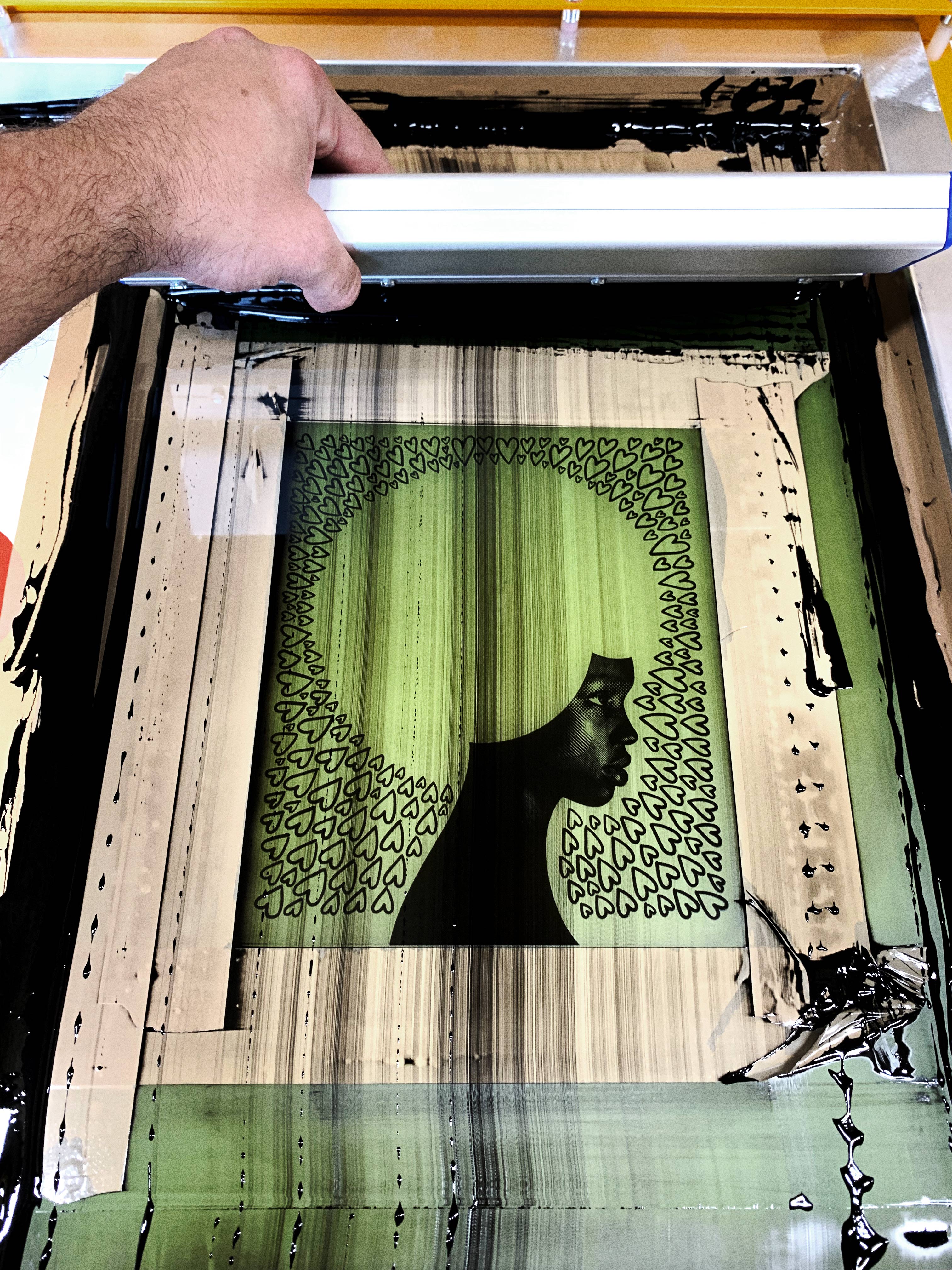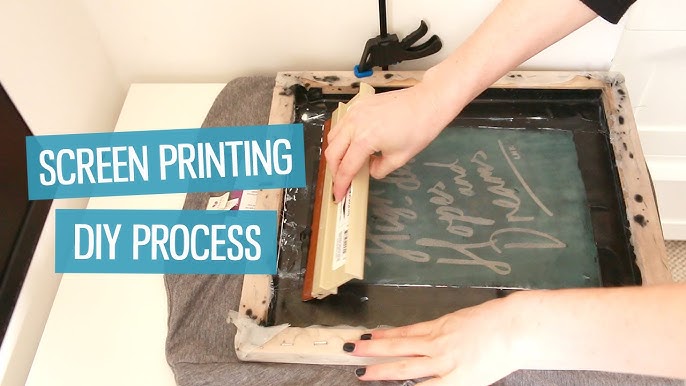Discover the Different Kinds Of Screen Printing Techniques for Your Following Job
Screen printing provides a diverse variety of techniques that can enhance any kind of imaginative project. From typical methods like serigraphy to modern technologies such as direct-to-garment printing, each strategy has its unique advantages. Specialty options, including metallic and eco-friendly inks, present a lot more opportunities. Comprehending these methods can considerably impact the last outcome. The obstacle lies in picking the most suitable approach for certain needs and wanted effects. What aspects should one consider?

The Basics of Screen Printing
Although screen printing might seem complicated, it is fundamentally an uncomplicated process that involves transferring ink with a mesh screen onto numerous surface areas. The strategy begins with the creation of a pattern, which specifies the layout to be published. This pattern is connected to a mesh screen, commonly made of polyester or nylon. Once the pattern remains in location, ink is related to the screen and pressed with the mesh making use of a squeegee, causing the preferred pattern being published on the underlying product.
Screen printing can be executed on a variety of substratums, consisting of fabric, plastic, and paper, making it a flexible choice for various projects. The process permits lively shades and intricate designs, making it popular in industries such as marketing, art, and style. Comprehending these basics outfits people with the foundational knowledge required to explore more advanced methods in screen printing.
Standard Screen Printing Techniques
Traditional screen printing methods have been utilized for centuries, maintaining the craftsmanship and virtuosity of this technique. This strategy uses a mesh screen to move ink onto a substrate, such as material or paper, enabling resilient and vibrant styles. The procedure begins with producing a stencil, which obstructs particular areas of the screen to regulate where the ink will be used.
One preferred technique is serigraphy, often made use of for artistic prints and restricted versions. An additional is making use of water-based inks, which are eco-friendly and give a soft feel on fabrics - 10:9 Design Screen Printing. Furthermore, typical approaches can consist of hands-on printing, where artisans apply ink with a squeegee, ensuring accuracy and interest to detail
These techniques continue to be valued in the market for their tactile quality and the distinct textures they produce, interesting both designers and consumers who appreciate the heritage of screen printing.
Digital Screen Printing Innovations
As the need for faster production and customization in the printing sector has risen, digital screen printing innovations have become a game-changer. This innovation blends typical screen printing techniques with electronic procedures, allowing for quick prototyping and complex styles that were previously hard to attain. One considerable development is the introduction of direct-to-garment (DTG) printing, which promotes top notch, full-color prints on various fabrics without the requirement for screens. Additionally, innovations in ink formulas have actually caused green choices that maintain lively shades while lessening environmental impact. Using automated systems even more streamlines production, lowering labor expenses and enhancing precision. These innovations not only satisfy little batch orders and tailored styles yet likewise permit for quicker turnaround times, making them ideal for organizations focused on conference customer demands in a fast-paced market. Digital screen printing, subsequently, represents a crucial development in the domain name of printing methods.
Specialized Screen Printing Techniques
Exploring specialty screen printing methods exposes a diverse range of methods that press the limits of creative thinking and capability in the printing sector. Amongst these, glow-in-the-dark inks offer an one-of-a-kind aesthetic effect, making layouts come active in low-light problems. Metal inks, recognized for their sparkling surface, include a touch of luxury to printed products. One more ingenious technique is discharge printing, which eliminates dye from the material as opposed to including ink, causing a soft, classic feeling. High-density printing develops an increased appearance externally, boosting responsive engagement. Furthermore, water-based inks are getting appeal for their vibrant shades and lowered ecological impact. Each of these specialty techniques caters to particular style requirements, allowing artists and brands to develop standout items that resonate with their target markets. By leveraging these techniques, businesses can elevate their screen printing projects to new elevations, ensuring memorable perceptions.
Eco-Friendly Screen Printing Options
Eco-friendly screen printing alternatives are getting grip as the sector shifts in the direction of sustainability. Sustainable ink selections and using naturally degradable materials are key parts in decreasing the environmental effect of the printing process. By taking on these methods, screen printers can add to a more sustainable future while keeping high-quality results.
Sustainable Ink Options

Biodegradable Products Usage
As the screen printing market advances, the incorporation of biodegradable materials is ending up being significantly essential for environmentally mindful methods. Designers and makers are currently checking out inks and substrates made from all-natural, sustainable sources that decompose more efficiently than traditional counterparts. These biodegradable options lower plastic waste and lessen ecological effect, lining up with the expanding need for sustainable products.
Usual examples consist of water-based inks and natural cotton textiles, both of which reduce hazardous chemicals and advertise eco-friendliness. Brand names that adopt these materials often boost their market charm, attracting customers that prioritize sustainability. As understanding of environmental problems proceeds to climb, the shift in the direction of biodegradable materials in screen printing is most likely to obtain momentum, cultivating a greener sector criterion.
Selecting the Right Strategy for Your Task
How can one identify the most ideal screen printing method for a particular task? The decision pivots on numerous variables, including the material to be published on, the intricacy of the layout, and the preferred production volume - 10:9 Design near me. For circumstances, direct-to-garment printing is suitable for detailed styles with countless shades, while traditional screen printing excels for bigger runs of easier graphics
Additionally, consideration of the end-use of the printed thing is crucial. For outdoor applications, techniques that offer resilience and weather condition resistance, such as plastisol ink, may be preferred. Conversely, environmentally-conscious projects may profit from biodegradable materials or water-based inks.
Inevitably, recognizing the job's unique requirements enables an enlightened choice, making sure both visual charm and practical longevity. By assessing style complexity, material compatibility, and production range, one can effectively choose one of the most ideal screen printing strategy to fulfill their task's goals.
Regularly Asked Concerns
What Is the Background of Screen Printing?
Screen printing came from in old China around 1000 AD, progressing through Japan and Europe. By the 20th century, it ended up being preferred in industrial art and style, changing exactly how layouts were created and dispersed globally.

Just how Do I Prepare Art Work for Screen Printing?
To prepare artwork for screen printing, one should guarantee high resolution, use a suitable color setting, produce separate layers for every shade, and transform text to describes, assuring compatibility with the printing process and preferred end result.
What Products Are Best for Screen Printing?
The finest materials for screen printing include top quality inks, sturdy displays, and appropriate substratums like cotton, polyester, or blends. Additionally, utilizing proper emulsion and squeegees can boost the printing procedure and outcomes.
Can I Screen Print at Home?
Yes, screen printing in the house is feasible. With the ideal materials, setup, and strategies, people can produce high-grade prints. Careful consideration of work area and devices is necessary for effective outcomes.
What Are Typical Errors in Screen Printing?
Common blunders in screen printing consist of inappropriate direct exposure times, poor ink uniformity, misalignment of screens, insufficient cleansing of products, and ignoring to check prints. These errors can compromise the quality and precision of the end product.
Screen printing may appear facility, it is basically a simple process that involves moving ink with a mesh screen onto different surfaces. As the need for faster manufacturing and personalization in the printing industry has risen, digital screen printing advancements have emerged as a game-changer. Discovering specialized screen printing approaches discloses a varied selection of strategies that press the borders of creativity and performance in the printing industry. The finest materials for screen printing include premium inks, long lasting screens, and appropriate substratums like cotton, polyester, or blends (10:9 Design Company). Common blunders in screen printing consist of incorrect exposure times, insufficient ink consistency, imbalance of screens, insufficient cleansing of products, and ignoring to check prints